What Horrors Lie in Your Google AdWords Account?
by Aden Andrus • October 4, 2019
Does opening your Google AdWords account ever fill you with dread? You’re not sure what you’re about to see, but you know that something has gone terribly, horribly wrong.
If so, you’re not alone.
Run a Google AdWords account for long enough, and you’re sure to discover that strange, inexplicable things happen while your back is turned. Your clicks stop converting. Your keywords stop performing. Your budget disappears…leaving nothing behind to show for it.
And you don’t know why…
Is Your Google AdWords Account Haunted?
While people seem to love watching vampires suck the life from their victims or werewolves go on a rampage on TV, it’s a much scarier thing when it starts happening to your Google AdWords account. Like it or not, your favorite film monsters have very real digital counterparts.
Although you can’t see them, they’re there, lurking in the shadows…waiting for their chance to strike. Is it any wonder that your Google AdWords account feels like a horror story?
If you’ve ever opened your account and wondered, What is going on?, odds are that your account has fallen prey to a PPC monster. Let’s take a look at a few of these creatures and what they can do to your account:
Vampiric Keywords
Nothing sucks your marketing budget dry faster than a keyword vampire. The only problem is, most marketers invite vampiric keywords into their campaigns without even realizing it.
As with all vampires, these keywords often seem very attractive. They might even look like a great match for the search intent you’re targeting, but in reality, they just suck the life out of your campaigns.
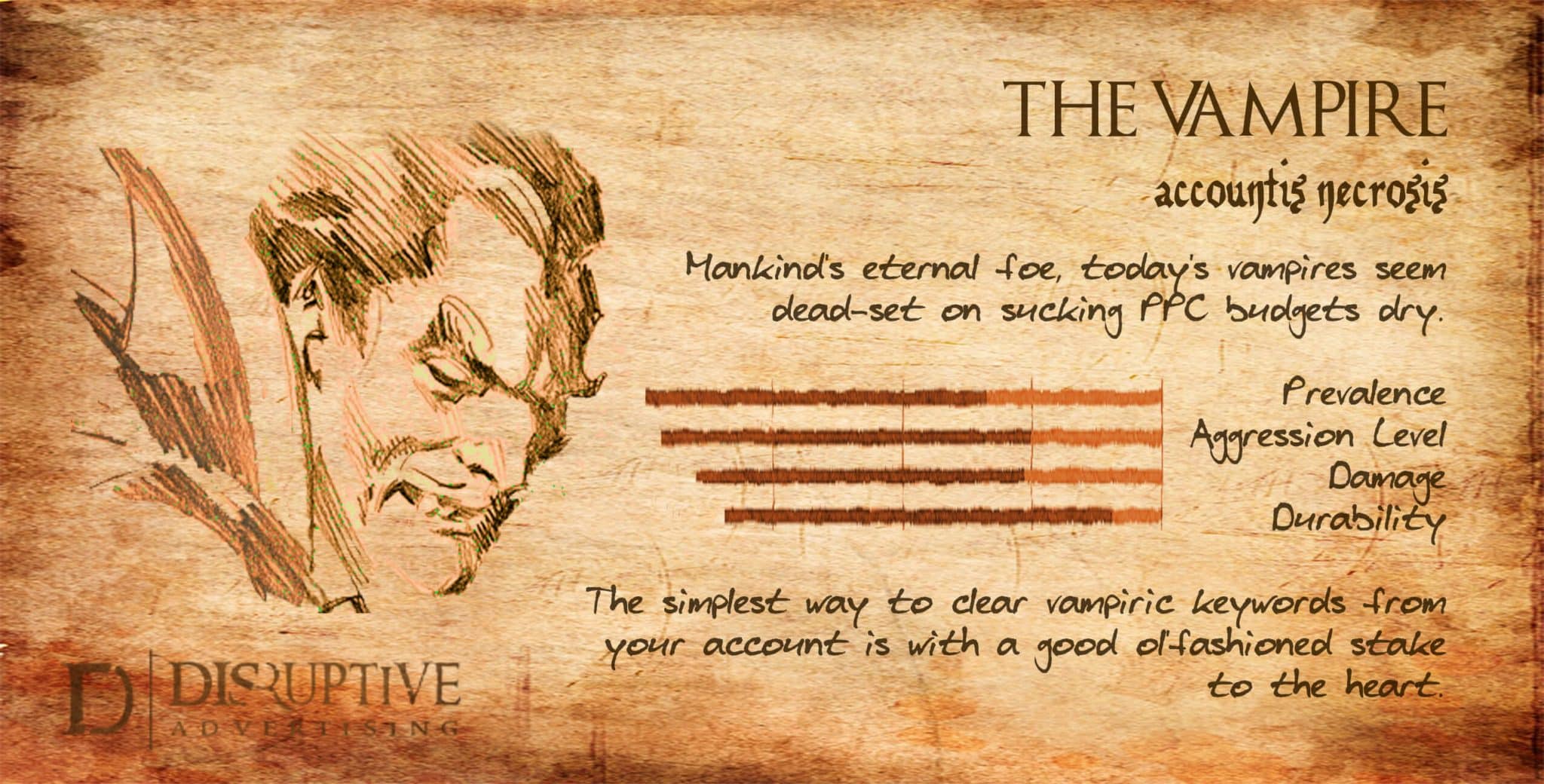
Rather than funneling you clicks that lead to conversions, keyword vampires produce nothing of value and suck budget away from your profitable keywords, leaving only the lifeless remains of a once-promising Google Ads campaign.
Unfortunately, vampiric keywords can be very hard to track down. Like all vampires, they look just like their prey—at least, on the surface.
Holding a cross up in front of your computer screen might help you spot a couple of vampiric keywords, but that’s not very practical when you’ve got dozens-to-hundreds of keywords to screen.
The good news is, there’s an easy, quick way to track down the keyword vampires in your Google AdWords account. Simply open click on the Keywords tab in the left-hand sidebar, choose a reasonable time frame (4-12 weeks usually works) and then create a filter for “Conversions < 1”.
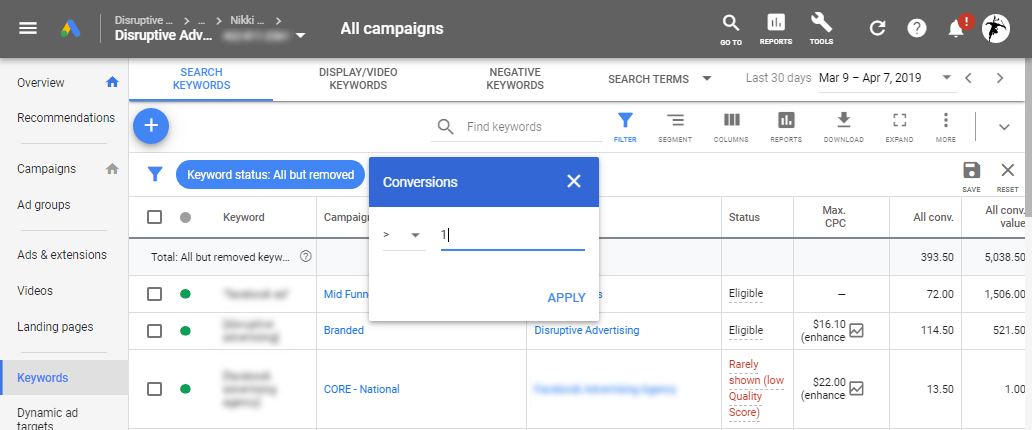
The keywords that show up aren’t producing any conversions, but they’re probably costing you a surprising amount of money. In other words, they are bleeding your budget dry.
Once you’ve tracked down your vampiric keywords, be strong. No matter how nice or attractive they seem, you need to eliminate them. Put a stake in them before they can do any more damage.
Frankensteinian Campaigns
Remember Frankenstein’s monster? The miserable creature stitched together from countless corpses and forced into a horrible semblance of life?
It’s a cautionary tale of confusion, destruction and heartbreak…and one that plays out over and over in paid search advertising.
Rather than letting their old, ineffective keywords and ads rest in peace, marketers often feel an obsessive need to try and create new life from dead campaigns. Sewing together the pieces of old campaigns, they feverishly add marketing budget until the monstrosity finally starts moving.
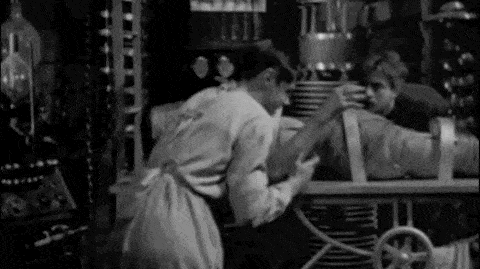
Although these monstrous creations can produce clicks and conversions, they are little more than a poor imitation of a real Google AdWords campaigns.
In a bewildered daze, these malformed campaigns lumber about wreaking havoc. Their keywords compete with each other, their ads baffle traffic—destroying any hope of a meaningful return on investment.
But let’s be honest, it really isn’t their fault.
These Frankensteinian campaigns are doing their best. They’re simply the result of an ill-fated desire to breathe new life into long-dead keywords or ads. The true fault lies with their creators.
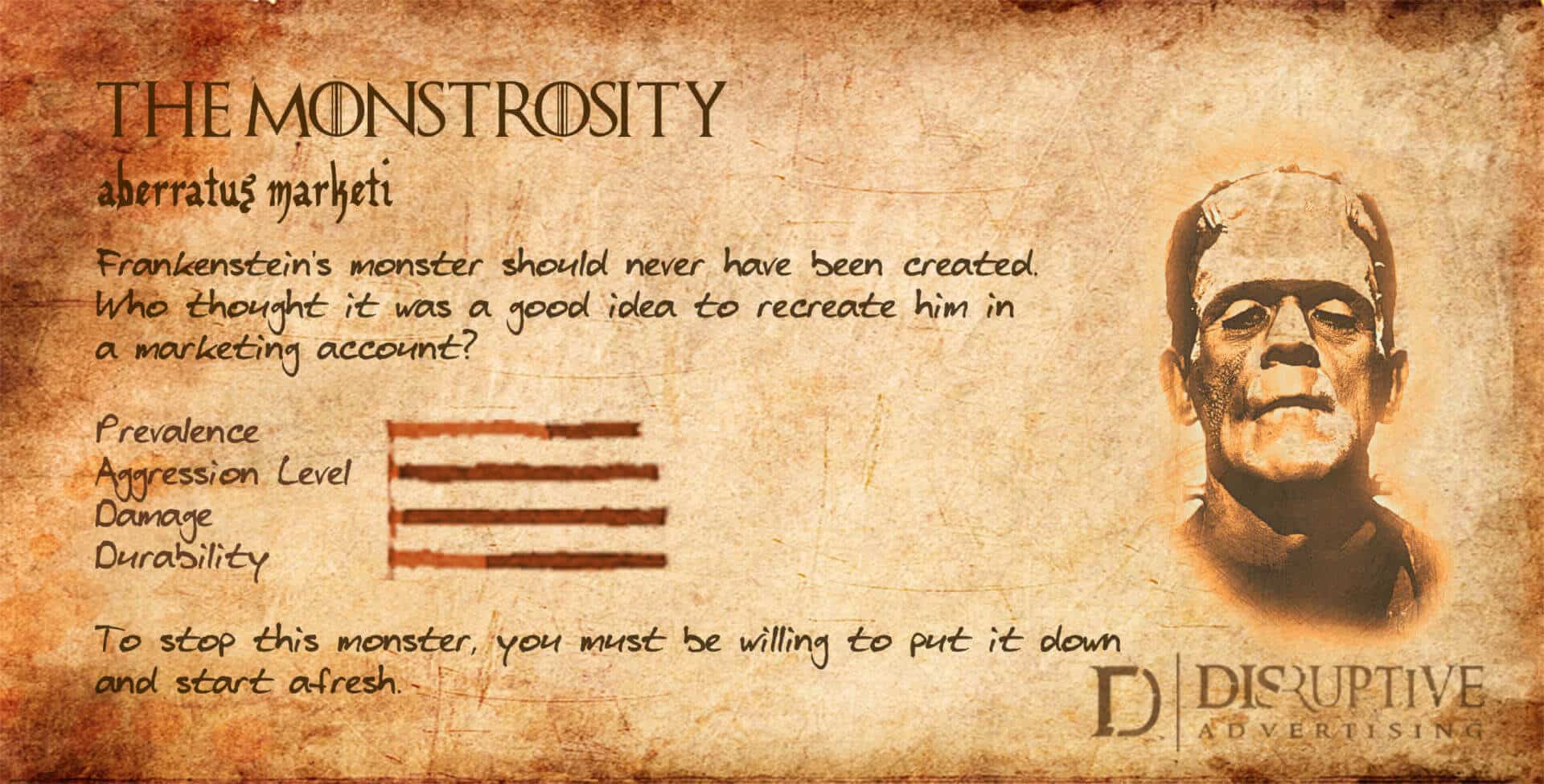
If you’ve been trying to merge old, ineffective campaigns into something new and fresh, your Google AdWords account may home to this kind of monstrosity.
It’s natural to want to breathe life back into a once-profitable campaign. But the problem is, the world moves on. Markets change. Keywords evolve. To effectively market, you have let go of the old and embrace something new.
There’s no harm in learning from the past, but it’s better to use what you learn from the past to create new campaigns than it is to try and stitch new ideas into old campaigns. Lay the monsters of the past to rest and move on.
Jekyll and Hyde Messaging
Long before Bruce Banner became the Hulk, Jekyll created Hyde. As mild-mannered as these men might have seemed, beneath their calm exterior lay a monster.

Sadly, this sort of aggressive multiple personality disorder isn’t limited to philanthropic doctors. Most paid search accounts struggle with the same thing.
For example, let’s say you’re running ads for your pilot training program. Someone searches for “airplane pilot certification near me” and your ad shows up in position #2.
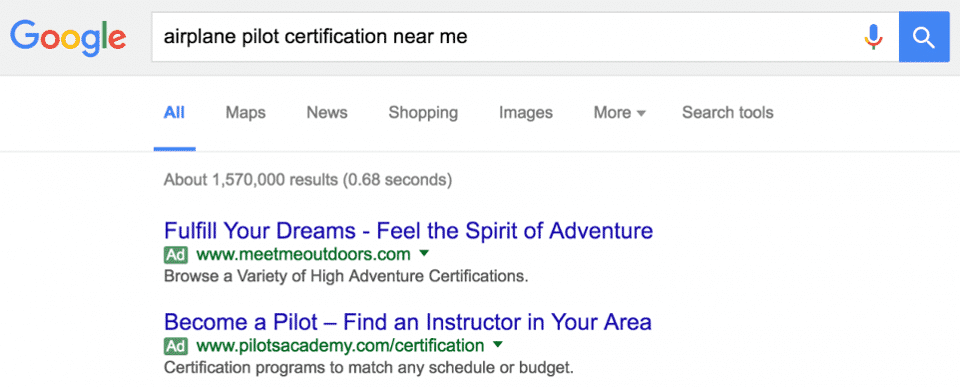
Your ad copy seems like a great fit for their needs, so they click on your ad, looking forward to learning more about local flight training options. So far, so good.
Then, suddenly, everything changes.
Your campaign’s alter ego kicks in and—instead of landing on a page about flight training—they end up on a landing page that looks like this:

Horrified and confused, your “perfect customer” screams and hits the back button as quickly as possible.
Okay, so maybe this is a bit of an exaggerated situation, but the point still remains: if your messaging isn’t consistent from keyword-to-click-to-landing page, you won’t get the conversions you’re after.
Unfortunately, this sort of mistake is incredibly common. The Dr. Jekyll side of your campaigns sets a certain expectation…and then the Mr. Hyde side catches your audience by surprise, leaving them confused, frustrated and looking for a way out.
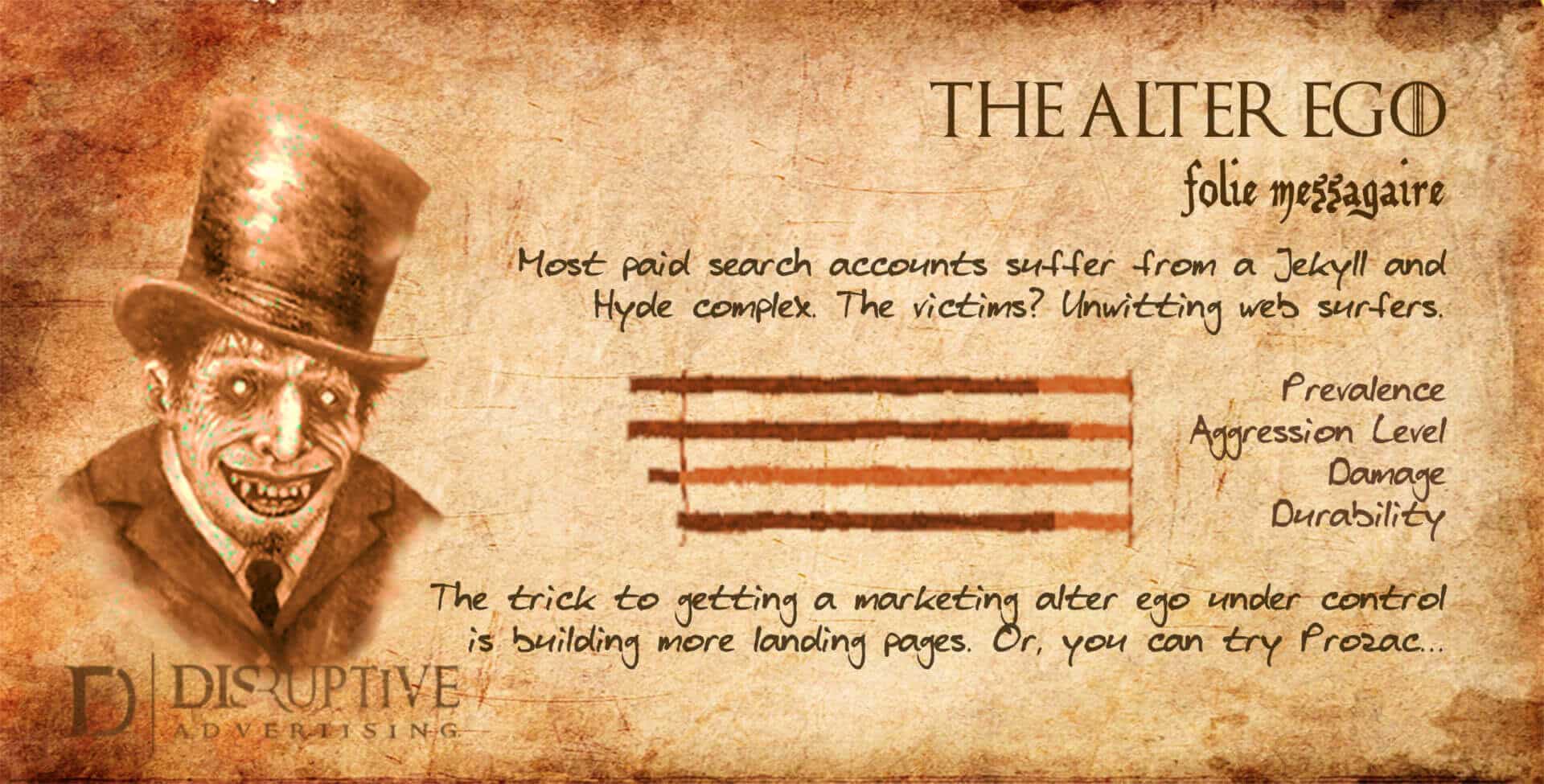
To handle this sort of PPC monster, you can’t just point your traffic to your home page or a generic landing page. That may work for some campaigns, but only if your ads are setting the right expectation.
Most of the time, you need a specific landing page for every group of closely related keywords—a landing page that matches the messaging of your ads. Yes, this means a lot of extra work, but it’s a lot better than pulling a Jekyll and Hyde on your target audience.
Van Helsing’s Guide to PPC Advertising
Now, you might be thinking, how did you learn about all of these PPC monsters, Aden?
Well, it’s all thanks to a rather singular book: Van Helsing’s Guide to PPC Advertising.
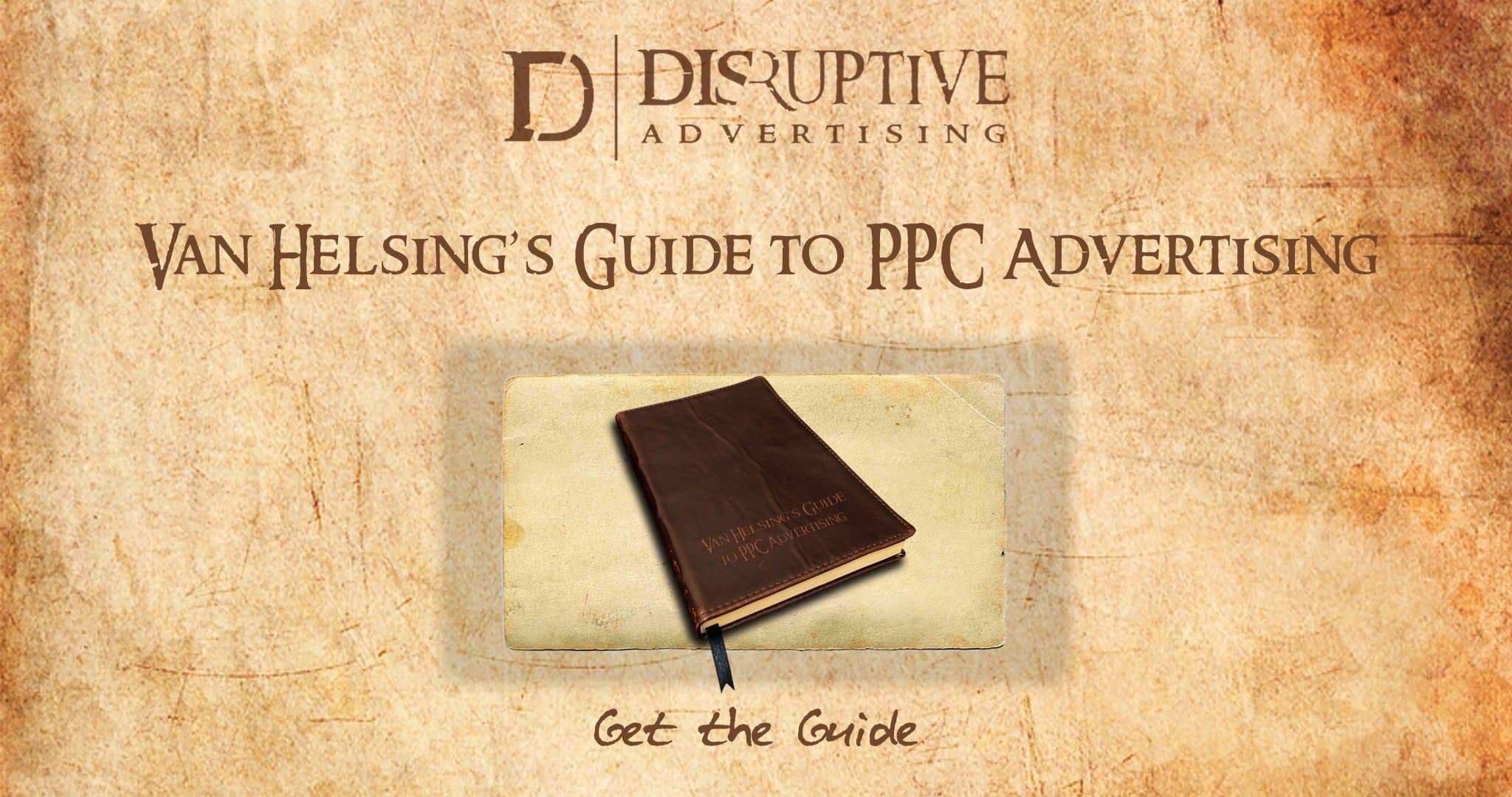
The monsters that we’ve covered in this article are just the tip of the iceberg.
Origin of the Guide
This guide was gifted to me by the legendary monster hunter, Van Helsing, himself. Late one night, while optimizing yet another Google AdWords account, I guess I must have pushed things too far. The vampire draining the client’s budget suddenly materialized and attacked!
I should have died, but apparently Disruptive Advertising isn’t alone in its fight against these PPC monsters. Another figure appeared out of nowhere and managed to stop the vampire. Then, as suddenly as he appeared, the man handed me a worn journal and then vanished into the night.
According to the journal, it seems that a variety of ancient monsters have adapted to the digital age and begun lurking inside Google AdWords accounts. Although an outright attack like the one I experienced is fairly rare, the creatures are out there…draining your Google Ads account dry while your back is turned.
For example, here are a couple of pages from the journal:
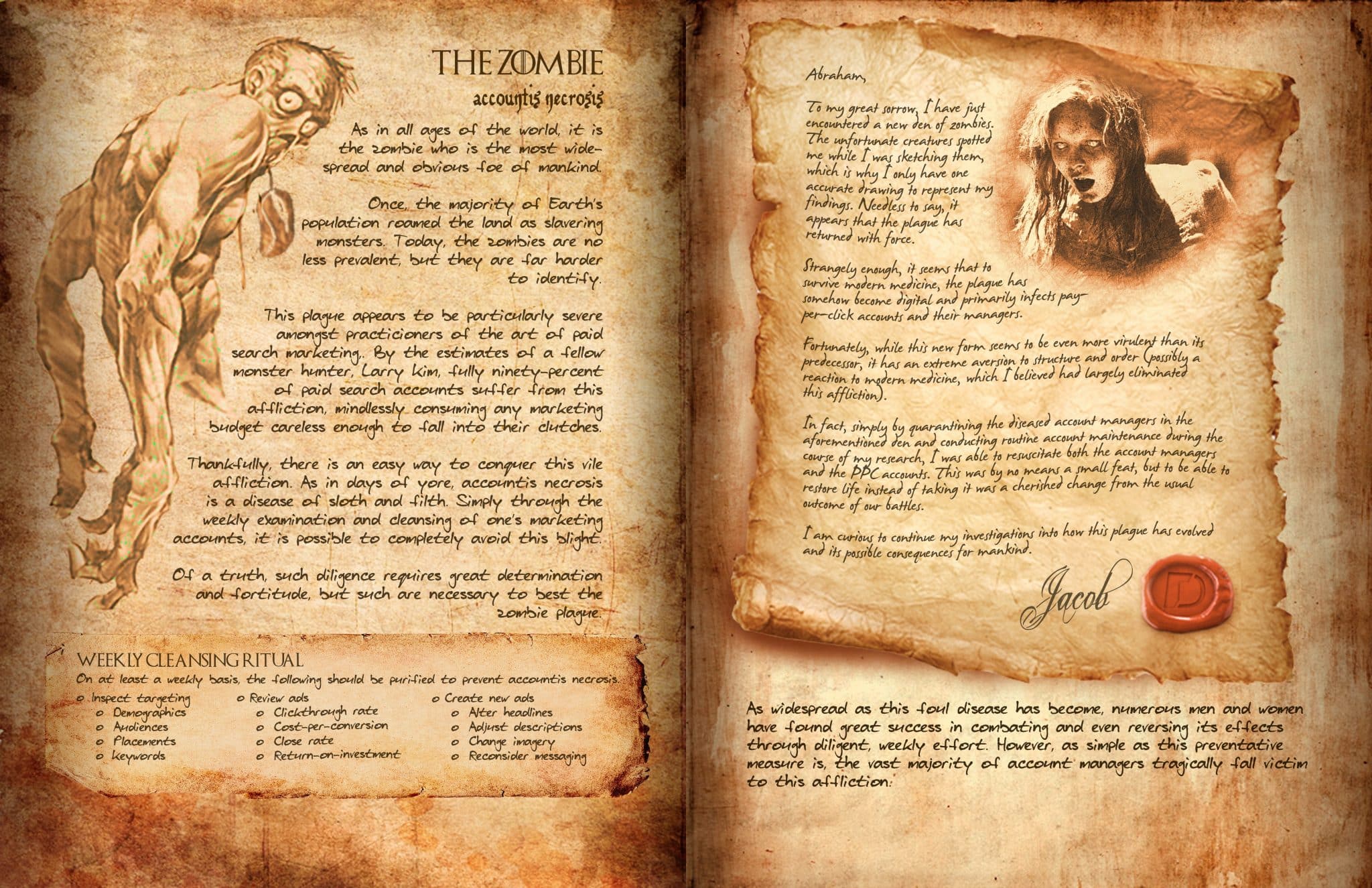
After trying out some of Van Helsing’s recommendations with clients, it became clear that he was right. There are monsters out there, and this journal was the key to combating them.
We scanned the most important pages from the book and created an eBook you can use to save your campaigns. Written in Van Helsing’s own hand, it’s some of the best Google AdWords advice we’ve seen.
In this guide, you’ll learn about the vampires, zombies, werewolves and other monsters that are probably lurking in your PPC marketing accounts right now. This manual is not for the faint of heart, but trust me, applying Van Helsing’s advice is much more pleasant than facing down a hungry vampire.
Conclusion
So, what horrors are hiding in your Google AdWords account? The answers might surprise you.
The monstrosities lurking inside your account might not look like portrayals of Jekyll and Hyde, Frankenstein’s monster or Dracula that you’ve seen on the silver screen, but they are just as dangerous. There’s a reason why you feel a chill whenever you take a look at your Google AdWords account.
There are monsters out there, and they’re draining your account dry.
It’s up to you to save the day, so download Van Helsing’s Guide to PPC Advertising, get the insights you need and take the fight to the monsters.
Or, if you’d like the help of a seasoned team of PPC monster hunters, click here to let us know! We’re on a mission to exterminate these digital horrors, so we’d be happy to offer a free audit of your Google AdWords account.
What monsters have you seen in your Google AdWords account? Ever been attacked by a PPC vampire? What did you think of the guide? Leave your thoughts in the comments below.





